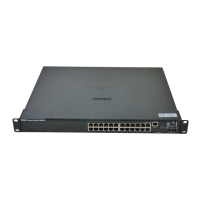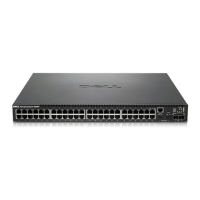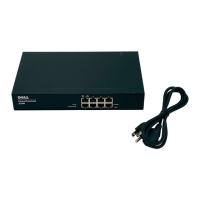SNMP Commands 329
Default Setting
’Default’ and ’DefaultSuper’ views exists.
Command Mode
Global Configuration mode.
User Guidelines
• You can enter this command multiple times for the same view record.
• The number of views is limited to 64.
• "Default" and "DefaultSuper" views exist. Those views are used by the software internally and can't be
deleted or modified.
Example
The following example creates a view that includes all objects in the MIB-II system group except for
sysServices (System 7) and all objects for interface 1 in the MIB-II interfaces group:
snmp-server filter
The snmp-server filter Global Configuration mode command creates or updates a filter entry. Use the no
form of this command to remove the specified Simple Network Management Protocol (SNMP) server
filter entry.
Syntax
•
snmp-server filter
filter-name
oid-tree
{
included
|
excluded
}
•
no snmp-server filter
filter-name
[
oid-tree
]
•
filter-name
— Label for the filter record that you are updating or creating. The name is used to
reference the record. (Range: Up to 30 characters).
•
oid-tree
— Object identifier of the ASN.1 subtree to be included or excluded from the view. To
identify the subtree, specify a text string consisting of numbers, such as
1.3.6.2.4
, or a word, such
as
system
. Replace a single subidentifier with the asterisk (*) wildcard to specify a subtree family;
for example
1.3.*.4.
•
included
— The filter type is included.
•
excluded
— The filter type is excluded.
Default Configuration
There are no default communities defined.
Console (config)# snmp-server view user-view system included
Console (config)# snmp-server view user-view system.7 excluded
Console (config)# snmp-server view user-view ifEntry.*.1 include
5400_CLI.book Page 329 Wednesday, December 17, 2008 4:33 PM

